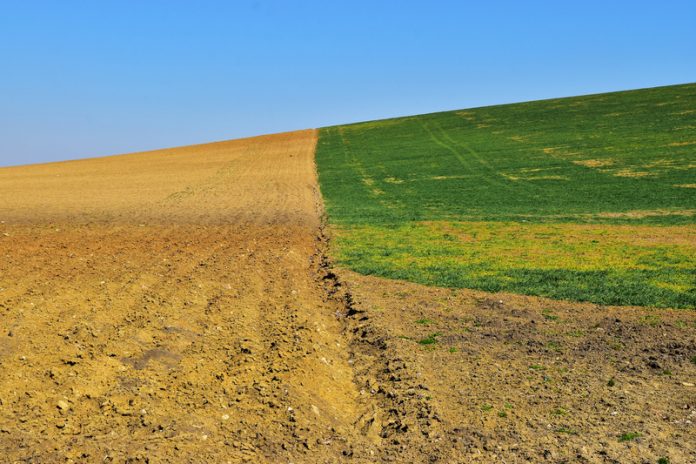Richard Teague, from Rangeland, Wildlife and Fisheries Management, Texas A&M University discusses the importance of soil and agriculture
Over 420 million years soils have been the foundation for the evolution of life on Earth. Pioneer organisms colonised and solubilised rock minerals and deposited dead organic matter to initiate soil formations. As more life forms and biodiversity developed entire connected networks of soil biota created the soil organic matter that enhanced rain infiltration capacity and retention, improved access to essential nutrients and support a diverse range of microbial processes. In turn, this enabled the rapid evolution and extension of microbial and plant life, and thus ever more organic detritus and soil sponges across the land; to form productive and resilient terrestrial bio-systems and diverse microbial, plant and animal life. These microbial processes regulate much of the Earth’s critical carbon, water, nutrient, heat dynamics, cooling, and climate cycles and, more importantly, their interconnected balance. The natural hydrological processes govern 95% of the heat dynamics and balance of the blue planet. However, we have been damaging these hydrological processes for more than 10,000 years but particularly in the past 300 years, largely through damaging agricultural and grazing practices.
There can be no life without soil and no soil without life. They have evolved together. Our soils were formed and are governed by the microbial processes that underpin all life as we know it on the planet. If we are to sustain our and other life forms, we need to understand, respect, and mimic how nature functions. While agriculture and grazing by domestic animals has been practised for hundreds or thousands of years in some lands, in most parts of the world deforestation, overgrazing, soil erosion, extractive management, and human conflicts have destroyed many civilisations entirely by destroying our nature created soils, biosystems and hydrological function.

With no known exceptions, the most significant export by humans worldwide is the mass of eroding soil. Industrial and neglectful agriculture and grazing have accelerated this considerably over the past 70 years via excessive use of cultivation, poor grazing practices, fertilisers, biocides, irrigation, fire, and fallowing, all of which oxidises soil carbon to decrease soil function. These oxidative losses are desertification processes and have degraded the structure, productivity, and resilience of these soils and their capacity to infiltrate, retain, and sustain water to cool climates. The water cycle and vegetation play a fundamental role in maintaining local climate through energy transfers in the process of evapotranspiration; specifically, the interaction of water and plants dampen temperature maxima resulting from intense solar radiation. Modification of landscapes by agriculture, overgrazing, deforestation, wetland drainage, and urbanisation that remove transpiring vegetation diminishes the self-regulatory damping of solar radiation and temperatures by healthy ecosystems. For evapotranspiration to deliver substantial cooling requires extensive ground cover of actively growing plants to maintain a healthy hydrological cycle. Elevation of soil carbon enhances both surface water infiltration, soil moisture-holding capacity and soil fertility needed to support plant growth and high leaf area that increase evapotranspiration and plant biomass.
Restoration of soils and biological functions of soils holds the solution to the damage of our life sustaining environment as nature has been doing for millennia.
Problems in agriculture that need rectifying
Operating our farms as ecosystems – The soil ecosystem’s functioning is determined by the presence, diversity, and photosynthetic rate of actively growing green plants. The soil’s ability to support nutrient-dense, high vitality crops, pastures, fruit, and vegetables requires a diverse array and biomass of soil microbes from a range of functional groups. The majority of microbes involved in nutrient acquisition are plant-dependent, and they depend on carbon compounds exuded by the roots of actively growing green plants.
More than 500 controlled experiments have collectively indicated that biodiversity loss reduces ecosystem productivity and stability. Contrary to the prevailing opinion of previous decades that biodiversity would have rare or weak effects in nature, these results show that biomass production increases with species richness in a wide range of wild taxa and ecosystems. In fact, after controlling for environmental covariates, increases in biomass with biodiversity are more robust than previously documented in experiments and comparable to, or more robust than, the effects of other well-known drivers of productivity, including climate and nutrient availability.
Eliminating damaging chemicals and biocides – The use of manufactured nitrogen and other fertilisers have doubled the amount of nitrogen circulating in the planet’s land and water systems. The result has been water pollution, dead zones in the oceans, and massive increases in nitrous oxide emissions from the soil. Minerals used in manufactured fertilisers are not available in infinite quantities and thus will be more expensive in time to purchase. Additionally, they have severe negative effects on soil function and stability. They collectively compromise the hydrological function of landscapes by destroying soil structure and water infiltration, decrease or eliminate vital microbes like fungi that increase access to nutrients and soil water, reduce nutrient losses and increase efficiency of nutrient cycling. The loss of such natural and cost free services leads to reduced plant productivity, increased rainfall runoff, reduced nutrient diversity and availability, and increases soil erosion.
Soil erosion caused by current cropland management contributes directly to annual soil mass losses from crop and grazing land is three times greater than the combined yields from corn, soybeans, and hay in the United States. Additionally, standard tillage practices and inorganic fertilisers and biocides have reduced soil surface cover and decimated soil microbial communities that control 90% of soil ecosystem function. These crop production inputs have contributed to the degradation of physical, chemical, and biological properties of soils.
Natural evolved ecosystems are highly productive and avoid these problems by developing microbial processes to create and sustain high levels of productivity through the evolved sophisticated range of microbial nutrient fixation, solubilisation, access, uptake and cycling processes. Over 80% of the bio-fertility and productivity of most natural ecosystem soils are governed not by their nutrient content or additions but by the health of these microbial bio-fertility processes. Adequate nutrient availability is provided by efficient nutrient cycling supplied by soil biota. Using regenerative agricultural and grazing management that mimics natural ecosystem processes enhances soil function, improving bio-fertility and minimising soil loss. Permanent cover of forage plants is highly effective in reducing soil erosion, and ruminants consuming only grazed forages under appropriate management result in more C sequestration than emissions. Incorporating forages and ruminants into regeneratively managed agroecosystems can elevate soil organic C, improve soil ecological function by minimising the damage of tillage and inorganic fertilisers and biocides, and enhance biodiversity and wildlife habitat.

Regenerative farmers have substantially lower input costs than conventional farmers because not only are fertiliser and fuel costs extremely low, but pests are more abundant in input-intensive cropping farms than on regenerative insecticide-free farms. Research, dating from the 1930s onwards, compiled in the 1980s and ignored since, demonstrates that pathogens and insects are attracted to nutritionally impoverished plants. Organisms only eat the foods appropriate to their needs, and nutritionally imbalanced plants send specific signals to pests indicating they are composed of simple sugars and amino acids – the only foods these pests are capable of digesting. Fully feeding our crops by creating healthy, functional soil biota makes them less likely to be the target of pests.
Restoring food nutrient density to improve our health – One of the most serious consequences of industrial agricultural practices is that they have severely compromised soil microbial communities and function that has directly caused substantial decreases in the nutrient density of foods produced from these degraded soils. Although part of this decrease in nutrient density is a result of selecting for higher yields, the primary reason is that to create nutrient-dense, crops, pastures, fruit, and vegetables require a diverse array of soil microbes from a range of functional groups. This requires using biological management that includes avoiding chemicals, fertilizers, and biocides that negatively impact beneficial soil microbes and insects as well as avoidance of food processing that further degrades food quality.
Regenerative agriculture for a resilient, sustainable future – Soil is a depletable resource, but production of food for human consumption does not have to deplete the soil. Cropping and grazing practices that build soil organic carbon levels and soil microbial communities and functions, and minimise soil erosion can result in soils being a net sink for GHGs rather than a significant source of GHGs currently the case. Effective soil management provides the highest potential for achieving sustainable use of agricultural land under a rapidly changing climate. Ruminant livestock is an essential tool for achieving sustainable agriculture. With appropriate grazing management, ruminant livestock can increase C sequestered in the soil to more than offset their GHG emissions and can support and improve other essential ecosystem services for local populations. Affected ecosystem services include water infiltration, nutrient cycling, soil formation, carbon sequestration, biodiversity, and wildlife habitat.

Ample science and practical evidence are available for supporting and outlining the advantages and necessity of adopting regenerative agriculture and grazing practices. However, it will not be found in the literature from universities and agencies funded and advocated by the industrial, agricultural input industry or among farmers embedded in this way of thinking. These sources of information and government price and other subsidies supporting such operations should be avoided to deliver more desirable and sustainable outcomes. Instead, learning from and following environmentally progressive managers and scientists working with them to create more robust, resilient, and regenerative global food production systems. Educated consumers wishing to support healthier environments and human health will be a significant part of achieving necessary changes.








